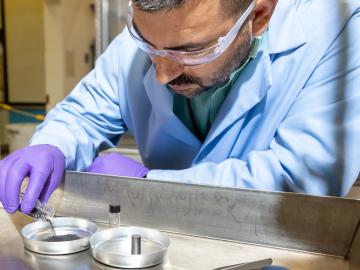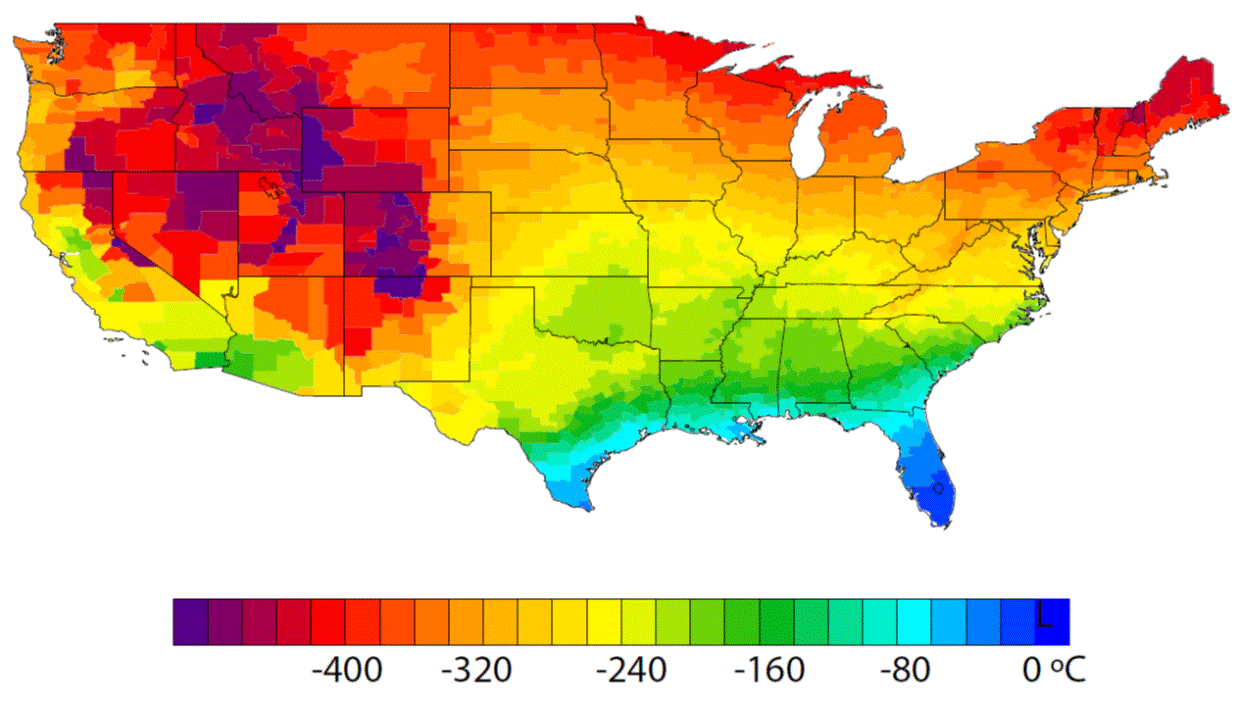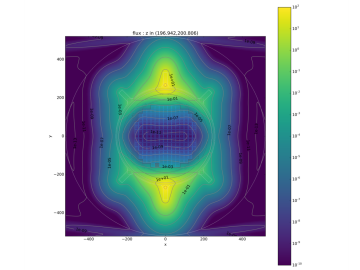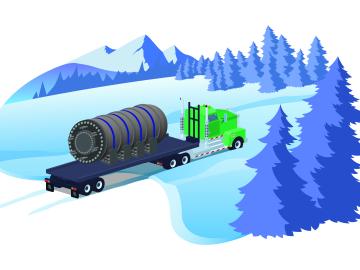
Filter News
Area of Research
- Advanced Manufacturing (1)
- Biology and Environment (41)
- Computational Engineering (1)
- Computer Science (1)
- Energy Science (29)
- Fusion and Fission (8)
- Fusion Energy (5)
- Isotopes (11)
- Materials (18)
- Materials for Computing (1)
- Mathematics (1)
- National Security (7)
- Neutron Science (28)
- Nuclear Science and Technology (14)
- Nuclear Systems Modeling, Simulation and Validation (1)
- Quantum information Science (1)
- Supercomputing (7)
News Type
News Topics
- (-) Clean Water (21)
- (-) Cybersecurity (9)
- (-) Environment (88)
- (-) Isotopes (18)
- (-) ITER (4)
- (-) Neutron Science (37)
- (-) Nuclear Energy (35)
- (-) Physics (20)
- (-) Statistics (1)
- 3-D Printing/Advanced Manufacturing (47)
- Advanced Reactors (15)
- Artificial Intelligence (25)
- Big Data (29)
- Bioenergy (40)
- Biology (48)
- Biomedical (24)
- Biotechnology (11)
- Buildings (31)
- Chemical Sciences (22)
- Composites (14)
- Computer Science (56)
- Coronavirus (17)
- Critical Materials (14)
- Emergency (1)
- Energy Storage (45)
- Exascale Computing (4)
- Fossil Energy (1)
- Frontier (4)
- Fusion (18)
- Grid (29)
- High-Performance Computing (23)
- Hydropower (8)
- Irradiation (2)
- Machine Learning (24)
- Materials (45)
- Materials Science (49)
- Mathematics (8)
- Mercury (7)
- Microscopy (22)
- Molten Salt (5)
- Nanotechnology (18)
- National Security (20)
- Partnerships (4)
- Polymers (15)
- Quantum Computing (6)
- Quantum Science (16)
- Security (8)
- Simulation (17)
- Space Exploration (10)
- Summit (10)
- Transportation (48)
Media Contacts

Ask Tyler Gerczak to find a negative in working at the Department of Energy’s Oak Ridge National Laboratory, and his only complaint is the summer weather. It is not as forgiving as the summers in Pulaski, Wisconsin, his hometown.

Using additive manufacturing, scientists experimenting with tungsten at Oak Ridge National Laboratory hope to unlock new potential of the high-performance heat-transferring material used to protect components from the plasma inside a fusion reactor. Fusion requires hydrogen isotopes to reach millions of degrees.

A detailed study by Oak Ridge National Laboratory estimated how much more—or less—energy United States residents might consume by 2050 relative to predicted shifts in seasonal weather patterns

A new method developed at Oak Ridge National Laboratory improves the energy efficiency of a desalination process known as solar-thermal evaporation.

Scientists at Oak Ridge National Laboratory studying quantum communications have discovered a more practical way to share secret messages among three parties, which could ultimately lead to better cybersecurity for the electric grid

Researchers have developed high-fidelity modeling capabilities for predicting radiation interactions outside of the reactor core—a tool that could help keep nuclear reactors running longer.

Researchers have pioneered a new technique using pressure to manipulate magnetism in thin film materials used to enhance performance in electronic devices.

Scientists have discovered a way to alter heat transport in thermoelectric materials, a finding that may ultimately improve energy efficiency as the materials

In a step toward advancing small modular nuclear reactor designs, scientists at Oak Ridge National Laboratory have run reactor simulations on ORNL supercomputer Summit with greater-than-expected computational efficiency.

Oak Ridge National Laboratory scientists are evaluating paths for licensing remotely operated microreactors, which could provide clean energy sources to hard-to-reach communities, such as isolated areas in Alaska.


